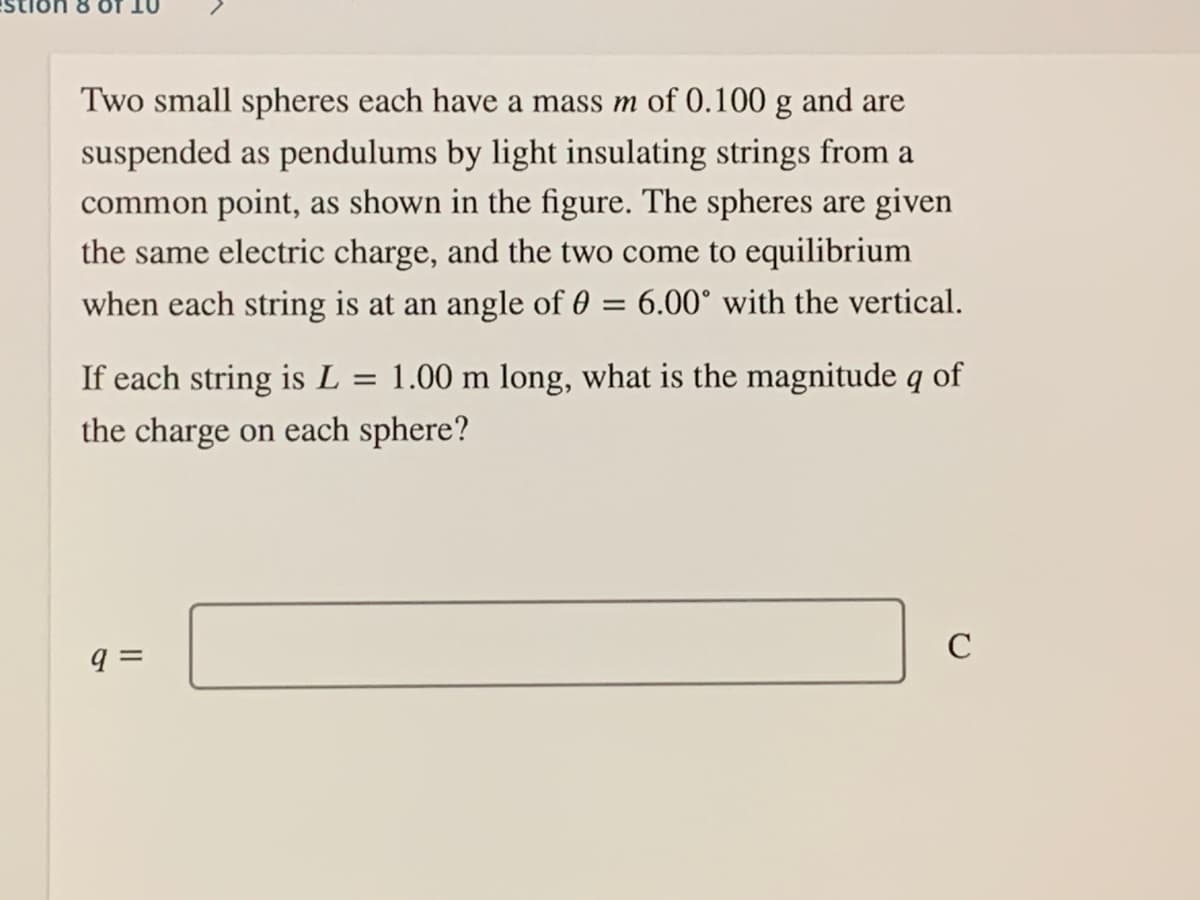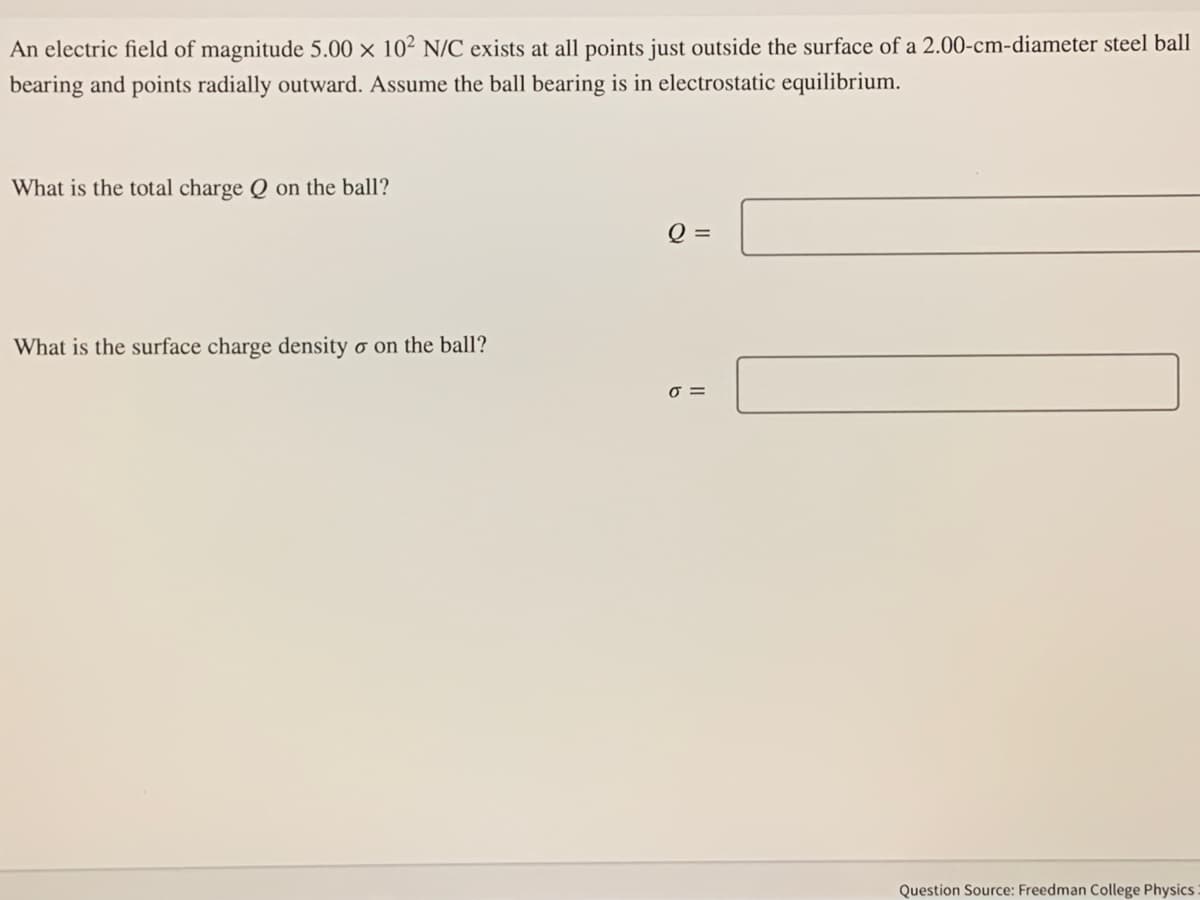Two small spheres each have a mass m of 0.100 g and are suspended as pendulums by light insulating strings from a common point, as shown in the figure. The spheres are given the same electric charge, and the two come to equilibrium when each string is at an angle of 0 = 6.00° with the vertical. If each string is L = 1.00 m long, what is the magnitude q of the charge on each sphere? C
Two small spheres each have a mass m of 0.100 g and are suspended as pendulums by light insulating strings from a common point, as shown in the figure. The spheres are given the same electric charge, and the two come to equilibrium when each string is at an angle of 0 = 6.00° with the vertical. If each string is L = 1.00 m long, what is the magnitude q of the charge on each sphere? C
Chapter6: Gauss's Law
Section: Chapter Questions
Problem 55P: The electric field 10.0 cm from the surface of a copper ball of radius 5.0 cm is directed toward the...
Related questions
Question
these r two separate questions.

Transcribed Image Text:Two small spheres each have a mass m of 0.100 g and are
suspended as pendulums by light insulating strings from a
common point, as shown in the figure. The spheres are given
the same electric charge, and the two come to equilibrium
when each string is at an angle of 0 = 6.00° with the vertical.
If each string is L = 1.00 m long, what is the magnitude q of
the charge on each sphere?
C
q =

Transcribed Image Text:An electric field of magnitude 5.00 x 102 N/C exists at all points just outside the surface of a 2.00-cm-diameter steel ball
bearing and points radially outward. Assume the ball bearing is in electrostatic equilibrium.
What is the total charge Q on the ball?
Q =
What is the surface charge density o on the ball?
=
Question Source: Freedman College Physics
Expert Solution
This question has been solved!
Explore an expertly crafted, step-by-step solution for a thorough understanding of key concepts.
This is a popular solution!
Trending now
This is a popular solution!
Step by step
Solved in 3 steps with 1 images

Knowledge Booster
Learn more about
Need a deep-dive on the concept behind this application? Look no further. Learn more about this topic, physics and related others by exploring similar questions and additional content below.Recommended textbooks for you


Physics for Scientists and Engineers: Foundations…
Physics
ISBN:
9781133939146
Author:
Katz, Debora M.
Publisher:
Cengage Learning

Physics for Scientists and Engineers
Physics
ISBN:
9781337553278
Author:
Raymond A. Serway, John W. Jewett
Publisher:
Cengage Learning


Physics for Scientists and Engineers: Foundations…
Physics
ISBN:
9781133939146
Author:
Katz, Debora M.
Publisher:
Cengage Learning

Physics for Scientists and Engineers
Physics
ISBN:
9781337553278
Author:
Raymond A. Serway, John W. Jewett
Publisher:
Cengage Learning

College Physics
Physics
ISBN:
9781305952300
Author:
Raymond A. Serway, Chris Vuille
Publisher:
Cengage Learning

Physics for Scientists and Engineers with Modern …
Physics
ISBN:
9781337553292
Author:
Raymond A. Serway, John W. Jewett
Publisher:
Cengage Learning

College Physics
Physics
ISBN:
9781285737027
Author:
Raymond A. Serway, Chris Vuille
Publisher:
Cengage Learning